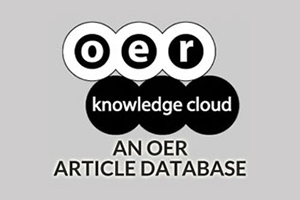Properties of Teacher Networks in Twitter: Are They Related to Community-Based Peer Production?
DOI:
https://doi.org/10.19173/irrodl.v18i1.2644Keywords:
online social networks, teachers’ professional development, network topology, open learning, peer production, virtual communities, bridging role, TwitterAbstract
Teachers participate in social networking sites to share knowledge and collaborate with other teachers to create education-related content. In this study we selected several communities in order to better understand the networks that these participants establish in Twitter and the role that the social network plays in their activity within the community, especially related with peer production. We analyzed the topology of these networks in two ways: a) the indirect relations by counting followers and followed people; and b) the conversational networks by counting mentions in tweets. We also analyzed the communities’ websites in order to elucidate whether their production was lightweight or heavyweight peer production. Results indicate that teacher networks adopt a community clusters archetype in which some teachers act as bridges between several groups. Although these networks do not form a tight crowd, their degree of tightness is superior to that of the general networks established in Twitter. Our results also indicate that the degree of tightness is important for sustaining heavyweight peer production and strong leadership can play a crucial role in establishing long-term commitment to a collective task.
Additional Files
Published
How to Cite
Issue
Section
License
This work is licensed under a Creative Commons Attribution 4.0 International License. The copyright for all content published in IRRODL remains with the authors.
This copyright agreement and usage license ensure that the article is distributed as widely as possible and can be included in any scientific or scholarly archive.
You are free to
- Share — copy and redistribute the material in any medium or format
- Adapt — remix, transform, and build upon the material for any purpose, even commercially.
The licensor cannot revoke these freedoms as long as you follow the license terms below:
- Attribution — You must give appropriate credit, provide a link to the license, and indicate if changes were made. You may do so in any reasonable manner, but not in any way that suggests the licensor endorses you or your use.
- No additional restrictions — You may not apply legal terms or technological measures that legally restrict others from doing anything the license permits.







